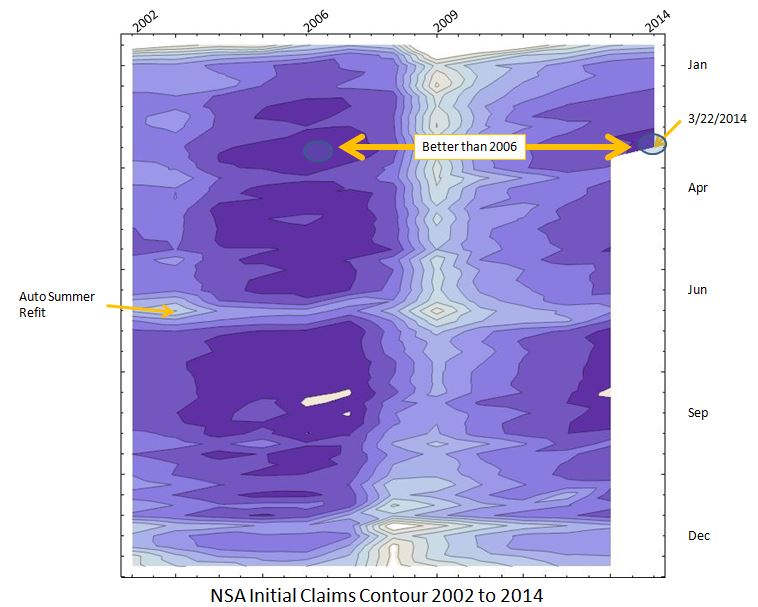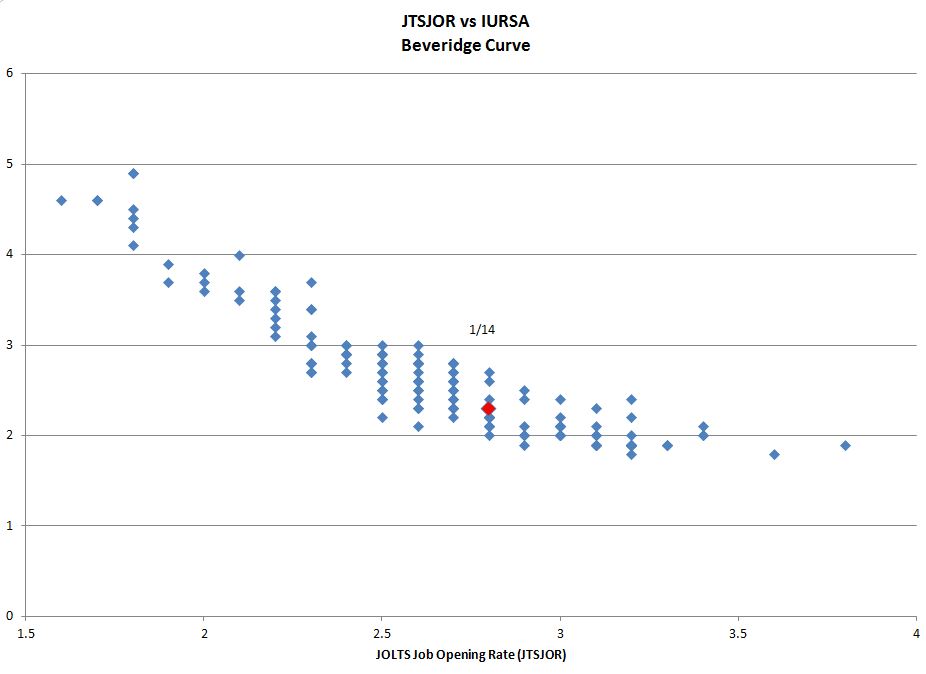The main labor metrics, U3 and U6 series from the household survey, are being ripped through by massive revisions, demographic changes, and huge numbers jumping from out of the labor force then back into the labor force. Since these cross rips are hitting both the denominator (labor force) and numerator (unemployed), U3 is a good dynamic indicator of relative changes of the supply of labor, but is likely not an accurate outright number at this point. U3 suggests there is still slackness in the labor supply which does not exist. The opposite condition exists - labor is tight and has started to create inflation.
Not going to get into the debate on LFPR or EP ratios, and in anycase those are not monetary economic issues but social policy issues for Congress or the administration to figure out. As far as FOMC policy, neither the employed to population ratio nor the labor force participation rate provide any way to apply policy tools. There is nothing the FOMC can gain traction upon or anything that provides the FOMC with a handle to apply change. Yet that doesn't stop most FOMC members babbling on about qualitative social questions. Such is the 'Great Fallacy" of forward guidance.
The Fed will exit the qualitative debate and return to the science of monetary economics, or as close as they can, to a rules based or axiomatic system of analysis with measured responses such that a regulated controlled application of policy tools occurs. The biggest problem with forward guidance is it throws the Fed into a long term commitment and deliberate blindness which if it results in policy error will be unforgivable.
The U3 rate is clearly out of whack as shown by the Beveridge Curve:
But it is becoming "rational" with U3 returning to the norm versus JOLTS job openings rate. This is shown by the very large improvement in U3, moving to the left and back to the usual relationship to demand (above arrow). Still, the supply of labor as per U3 is a good 1% higher than the demand for labor would indicate. There are large rips and unique anomalies hitting both the numerator and denominator of U3. But it will be noted in hindsight that the move of U3 "correcting" itself and re assuming the usual schedule to jobs openings started last July 2013 with the movement towards the labor demand over the last 5 months suggesting that the labor market is dramatically tightening up.
Confidence in the prediction, or current analysis, of labor tightness given the above, can be provided by observing the most current labor metric - weekly initial claims without the seasonal adjustment. This is why the CES folks at BLS use initial claims to revise the baseline for the employment indices. Weekly initial claims non-seasonally adjusted data is mapped out over a surface of the 2006 data:
Above shows the most recent data for 3/22/2014, "Week 11" in initial claims NSA.
A closeup of "Week 11" NSA initial claims for the last 32 years shows the very strong strength :
A closeup of "Week 11" NSA initial claims for the last 32 years shows the very strong strength :
During the July 2013 auto refit, initial claims completely returned to the norm and indicate a full recovery had occurred. Again, the same time that the U3 Beveridge Curve started to correct. This then can be used to qualify the U3 Beveridge Curve above, to gain confidence noting the closing back to the usual schedule at the same time initial claims indicate full recovery, returning to the 2006 level. Given the large movement of U3 parallel to the X axis towards the JOLTS job openings data for the last 5 months, it is now not aggressive to describe that the labor market is now very tight. (However there is still noise in the initial claims as the impact of the shutdown and the last 7 weeks of tail-event weather shows.)
Another view of this is to view a contour mapping of NSA initial claims since 2002, showing the summer refit and how current status equal or better than 2006 experience:
Another view of this is to view a contour mapping of NSA initial claims since 2002, showing the summer refit and how current status equal or better than 2006 experience:
Initial claims data is not impacted by the LFPR dropping, for the obvious that to get the insurance you have to stay in the labor force, and then insurance payments cease as one returns to work. The labor force has increased since 2006 despite the LFPR, so a better metric is the insured workers unemployment rate, or IURSA (FRED), than the levels. This IURSA is by definition a qualified pool of labor which is and has proven to be employable and to collect their unemployment insurance must remain in the labor force. IURSA will not be changed by the emergency extensions Congress granted, other than to withdrew from the LFPR. It should be noted that this is not an argument for public or fiscal policy, or that U6 and then the declining LFPR is acceptable - it is just that LFPR has no bearing in this discussion of the labor inputs for FOMC policy.
A steady "normal" relationship between IURSA and JOLTS job opening rate emerges, above the data noise of the U3 Beveridge Curve above, that shows that in terms of qualified labor the Beveridge Curve relationship stayed intact throughout the downturn and into the recovery, and shows that in this populace nothing much changed to the labor demand supply schedule:
We can throw CPI onto the above IURSA Beveridge Curve and then the nature/status of labor becomes apparent. Inflation starts when labor supply tightens. Going forward, given any growth, "new normal" or "old normal", very little qualified labor is left and currently (below) we have obviously moved past NAIRU and a Phillips Curve normal relationship still holds sway.
Inflation is now upon us, started, as usual, by labor market tightness:
We have passed the point that well over 2% inflation is now present or will be shortly and then we will jump to 3% plus, given past history. If the schedule of labor for that part of the pool that is inelastic has been maintained, and everything above says it has, the Fed will have no choice but to tighten significantly and swiftly ending ZIRP and moving quickly to a 2% Fed Funds.
A better showing of current labor tightness can be found when wage growth is substituted for the above CPI. Sticky pricing occurs as employers adjust not by reducing wages, of course, but by layoffs. That is why the regression on wages is flatter and never goes negative compared to CPI. This also means that when wage inflation commences the Fed has to have a powerful response, for being sticky once inflation starts it is very difficult to turn back down:
The lower boundary of the schedule of wage inflation versus job openings is now being approached and general wage inflation will start. No other conclusion can be had, once using the "right" Beveridge Curve, than that a general inflation is about to commence if is not already present.
The Fed will have to be very bold indeed to insist on Odyssean Policy and stick to forward guidance of ZIRP when the most stickiest inflation moves towards 3%, led by wage inflation.
The labor market is very tight now and there is little in the way of qualified labor left to induce to work but via a significant raise in wages.
The Fed will have to be very bold indeed to insist on Odyssean Policy and stick to forward guidance of ZIRP when the most stickiest inflation moves towards 3%, led by wage inflation.
The labor market is very tight now and there is little in the way of qualified labor left to induce to work but via a significant raise in wages.
It is very unlikely ZIRP lasts into the 3rd quarter of 2014.







No comments:
Post a Comment